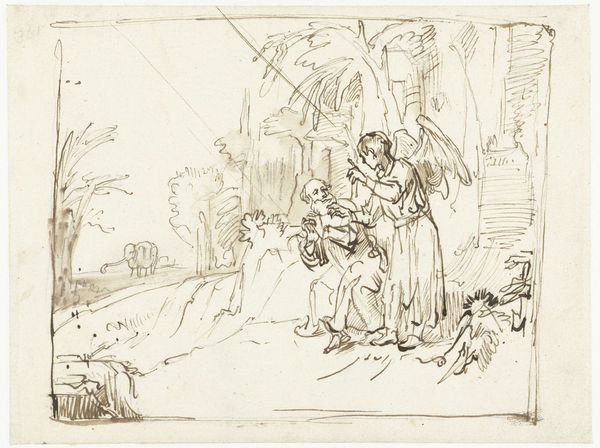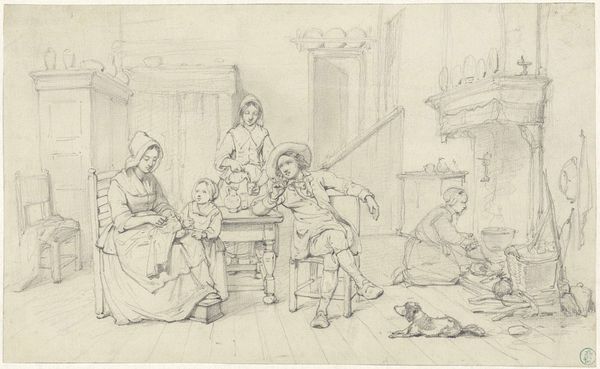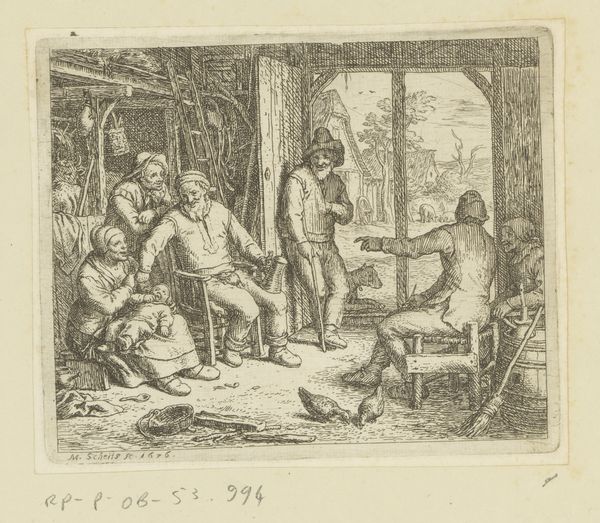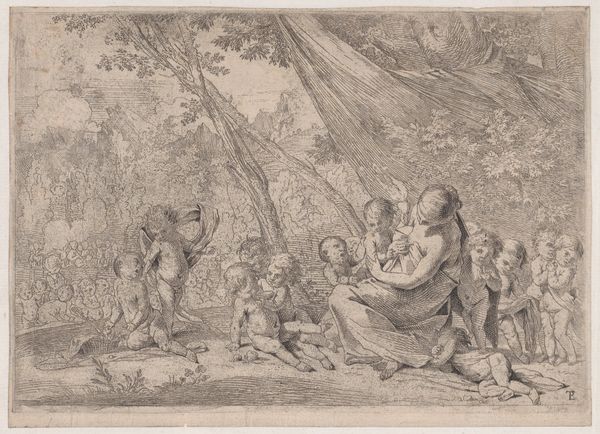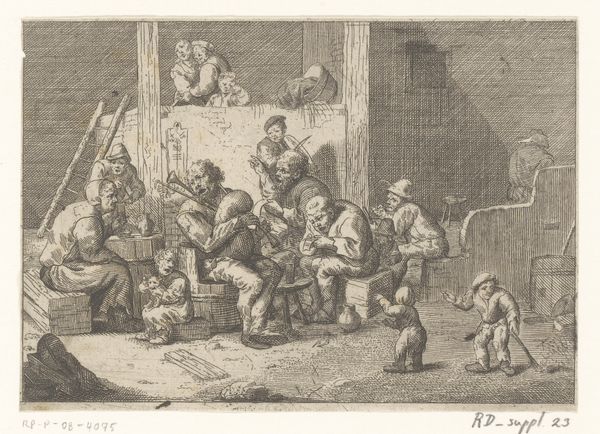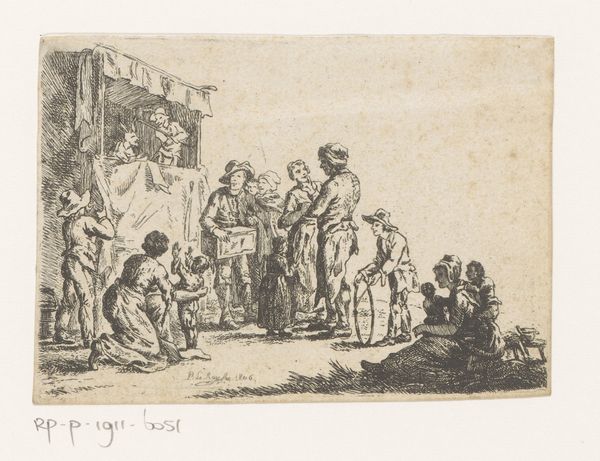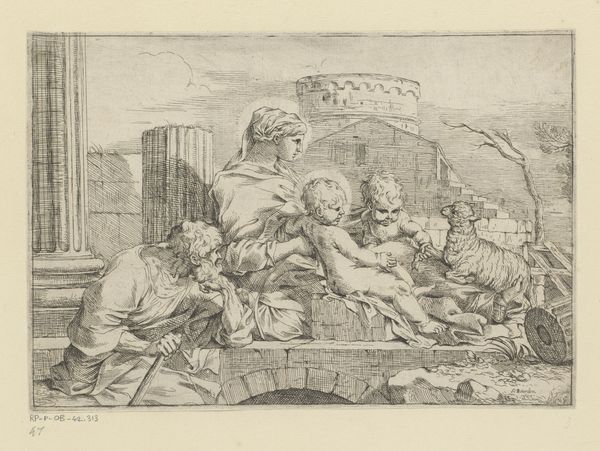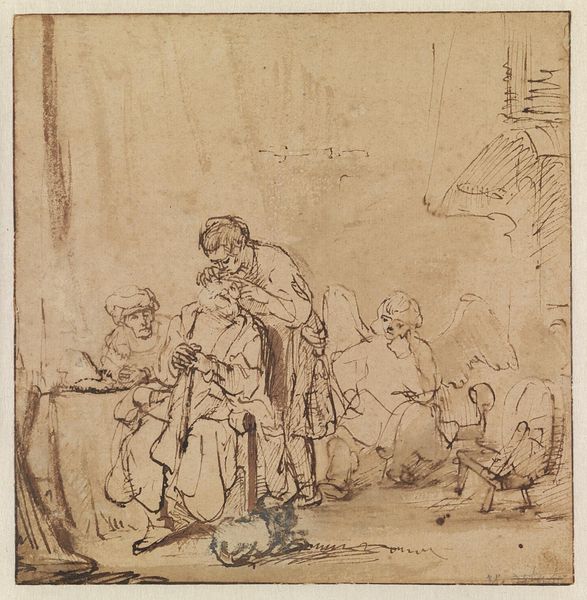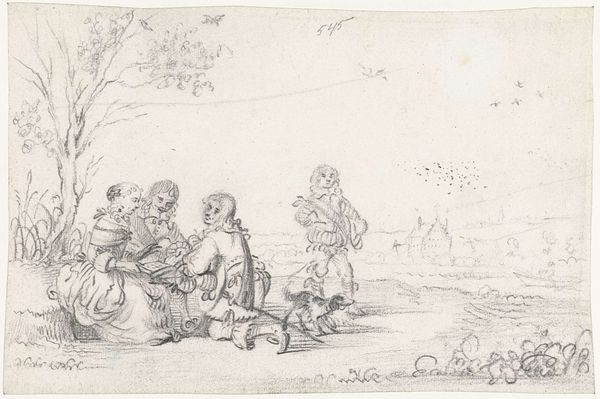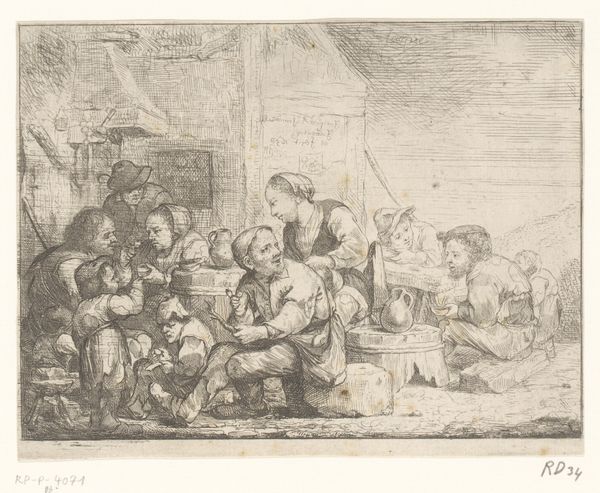
drawing, lithograph, print, paper, ink, engraving
#
drawing
#
neoclacissism
#
narrative-art
#
lithograph
# print
#
pen sketch
#
landscape
#
classical-realism
#
figuration
#
paper
#
ink
#
line
#
history-painting
#
engraving
Dimensions: 201 × 288 mm (image); 224 × 309 mm (sheet)
Copyright: Public Domain
Curator: Let's turn our attention to "Homer," a lithograph and engraving produced between 1804 and 1806 by Pierre Nolasque Bergeret. It's currently held in the collection of the Art Institute of Chicago. Editor: My immediate reaction is to its stark, almost severe linearity. The limited tonal range throws the narrative elements into high relief. Is this about... return? Curator: In many ways, yes. Bergeret is presenting us with a domestic tableau featuring the celebrated bard. There are numerous references at play here. Note the architecture which frames the composition, for example. What references does it evoke for you? Editor: There is the clear nod to Neoclassicism through an archaeological style that feels... staged? A proscenium to suggest, rather than reflect, daily life in ancient Greece. And the drapery too – a study of lines. Curator: Indeed, a staged vision imbued with symbolic meaning. The figures assembled likely reference not just Homer, but episodes from the Odyssey. It is also important to keep in mind how the classical world was understood in the early 19th Century: the birth of both archaeology and nation-building defined the image the period projected on to the past. Consider, then, that Homer functions not just as portrait, but as myth. Editor: You know, thinking about Bergeret through the lens of that era, it reframes how I see the medium, as well. Lithography, as a relatively new technique, also has something “staged” about it here – in a way reflecting painting techniques whilst simultaneously pushing towards print and seriality. Curator: Exactly. It presents a simulacrum of classical antiquity accessible to a wide public. A very compelling commentary on image circulation at a moment of intense political change. Editor: This is far richer and more ambivalent than my first reading allowed! The deceptive simplicity of the composition belies this very complex interplay between individual genius, collective identity, and technological change. Curator: I agree completely. The work truly captures something significant in its attempt to conjure antiquity.
Comments
No comments
Be the first to comment and join the conversation on the ultimate creative platform.
